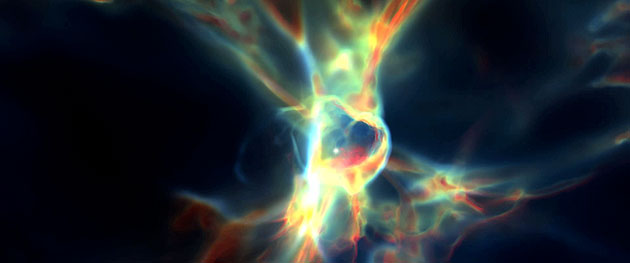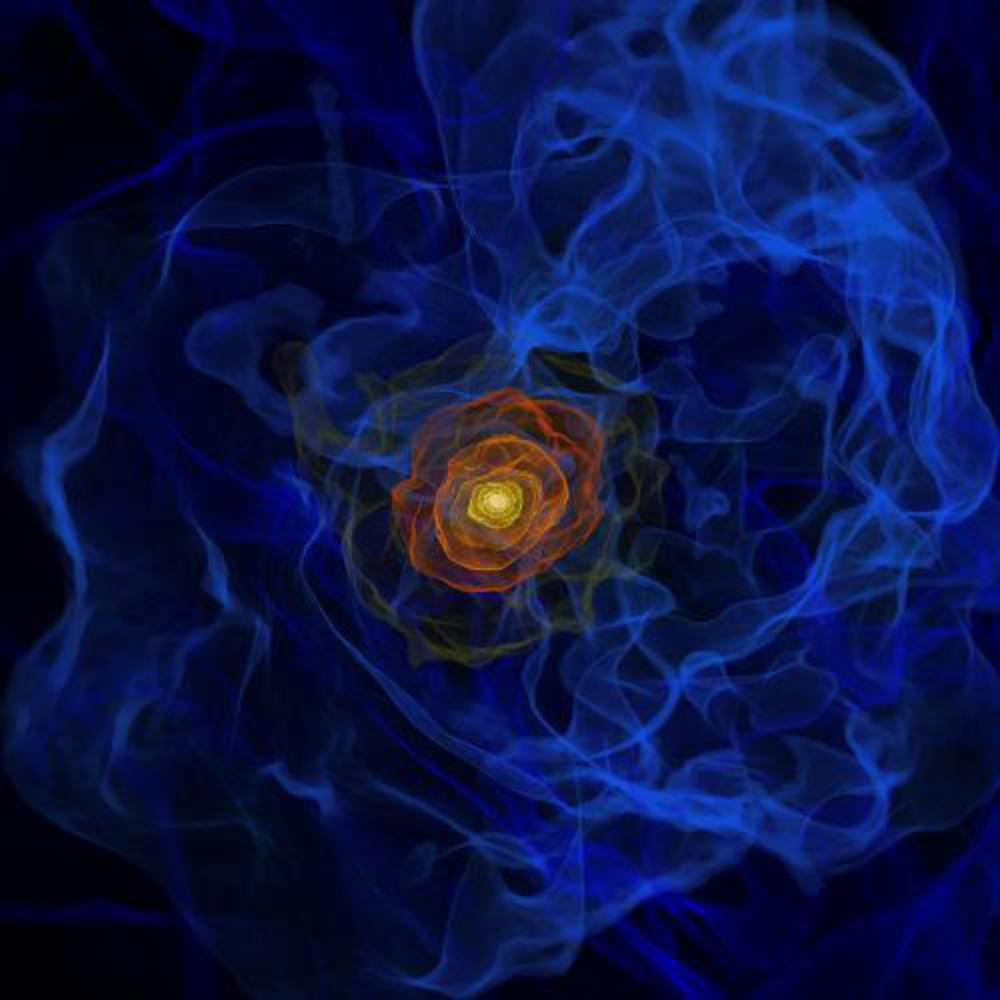Origins of the Universe Exposed in Dazzling 3D Videos

Some of the greatest mysteries of the universe, such as how the first stars were formed, spring to life in a new series of awe-inspiring 3D videos that will be shown at museums and universities in California and New York.
The full-color, high-definition 3D animations depict a range of compelling cosmic scenes, including swirling veils of gas and dust from exploding stars, colorful galaxy clusters, dynamic star formation and enigmatic dark matter.
The videos can be seen at the SLAC National Accelerator Laboratory in Menlo Park, Calif., which is a research facility operated by Stanford University. The animations are also being featured in planetarium shows now open to the general public at the American Museum of Natural History in New York City and the California Academy of Sciences in San Francisco.
Each video lasts roughly one to three minutes, and was made from calculations using trillions of bytes of data that link the latest physics theories with groundbreaking visualization techniques, officials at SLAC's Kavli Institute for Particle Astrophysics and Cosmology (KIPAC) said in a statement.
The animations shine a light on processes ranging from a few milliseconds of a supernova explosion to nearly 14 billion years of cosmic evolution, and are meant to be entertaining as well as educational. [7 Surprising Things About the Universe]
"I'm trying to predict the past — how the universe came to be the way that it is today," Tom Abel, an associate professor of physics at Stanford University and head of KIPAC's computational physics department, said in a statement. Abel specializes in using computer calculations and visualizations to experiment with how the universe may have evolved following the Big Bang.
Some of the videos show how the universe's first stars formed, and indicate that those first luminous objects in the universe shone a million times brighter than our sun, Abel said.
Get the Space.com Newsletter
Breaking space news, the latest updates on rocket launches, skywatching events and more!
"They died quickly and seeded the cosmos with the chemical elements necessary for life," he explained. "Just 100 million years after the Big Bang, galaxies started to assemble, one star at a time, and they are still growing today."
To create the animations, the researchers first craeted numerical simulations of the composition, distribution, temperature and other important properties of matter. The KIPAC visualization lab manager, Ralf Kaehler, then converted the results of the simulations into a series of images that were turned into the videos.
Different viewpoints are created by zooming in and out, panning across, or even flying through the scene.
"Creating these animations is a real joy these days because computers and software are so much more powerful today," Abel said. "Not long ago it took us weeks to produce a single animation. Now we can do one in an afternoon."

While these animations are primarily scientific tools, they are also meant to provide the audience with a unique experience.
"It's an immersive environment," Abel said. "You can explore three-dimensional data, 'Avatar'-style. It's wonderful to have the sensation of being inside the cosmological data."
But comparing the visualizations with actual observations can help scientists refine their theories.
For instance, Kaehler's videos have helped SLAC and KIPAC colleagues understand the formation and structure of galaxy clusters.
The researchers can also alter certain parameters in the simulations to see how theoretical details, such as specific properties of dark matter and dark energy, may affect how the universe appears today.
"These videos aren't just screensavers," KIPAC post-doctoral researcher Oliver Hahn said in a statement. "They show us how the universe really works."
Follow SPACE.com for the latest in space science and exploration news on Twitter @Spacedotcom and on Facebook.
Join our Space Forums to keep talking space on the latest missions, night sky and more! And if you have a news tip, correction or comment, let us know at: community@space.com.

Space.com is the premier source of space exploration, innovation and astronomy news, chronicling (and celebrating) humanity's ongoing expansion across the final frontier. Originally founded in 1999, Space.com is, and always has been, the passion of writers and editors who are space fans and also trained journalists. Our current news team consists of Editor-in-Chief Tariq Malik; Editor Hanneke Weitering, Senior Space Writer Mike Wall; Senior Writer Meghan Bartels; Senior Writer Chelsea Gohd, Senior Writer Tereza Pultarova and Staff Writer Alexander Cox, focusing on e-commerce. Senior Producer Steve Spaleta oversees our space videos, with Diana Whitcroft as our Social Media Editor.









